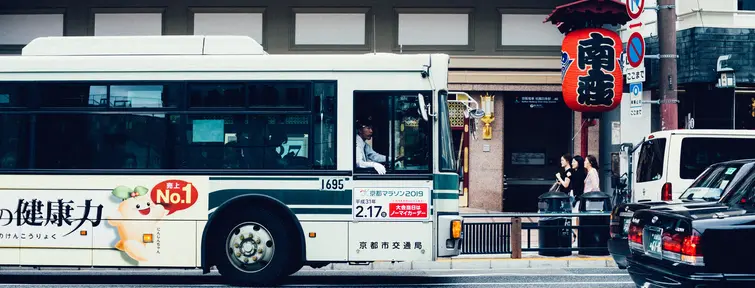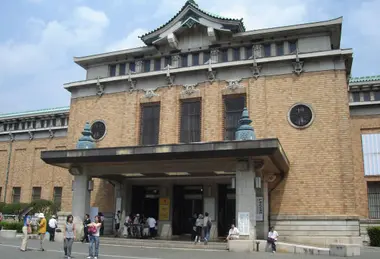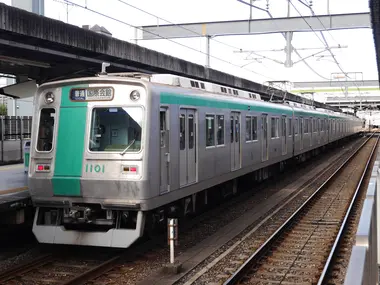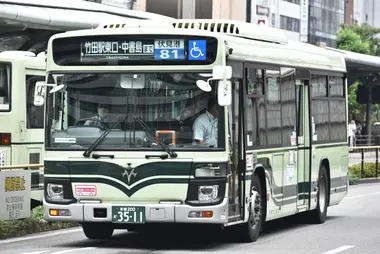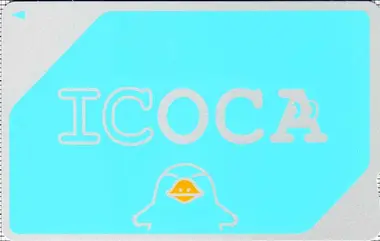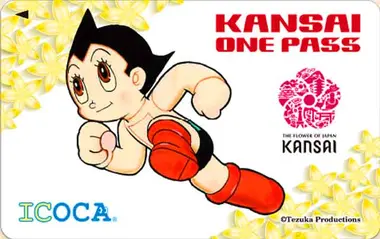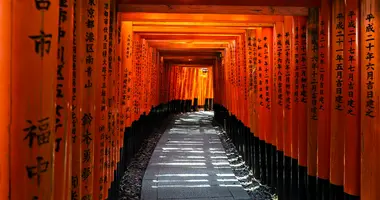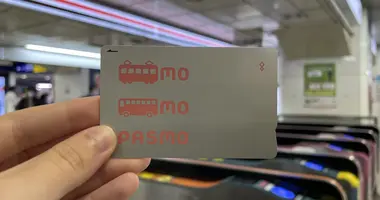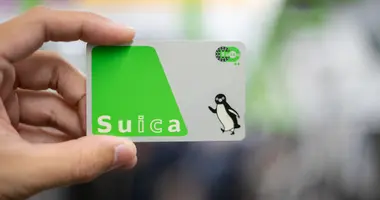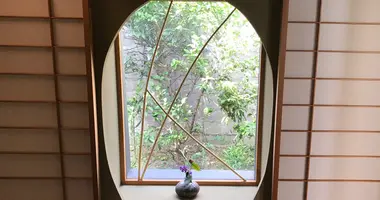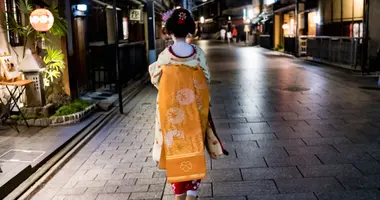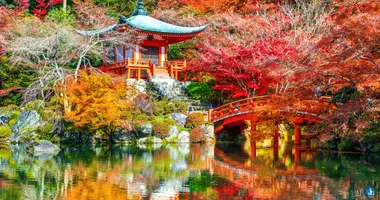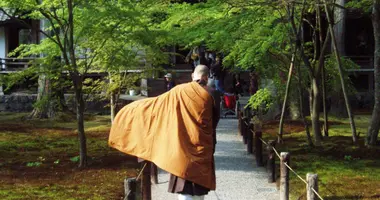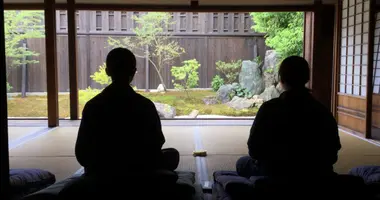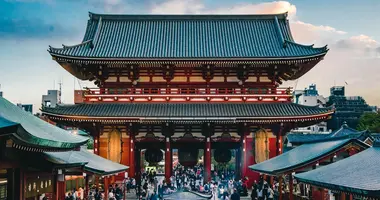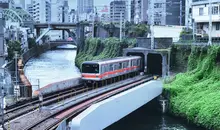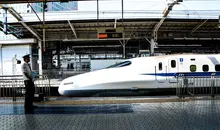Kyoto Bus- und U-Bahn-Karten & Pässe
- Veröffentlicht am : 13/02/2025
- Von : Japan Experience
- Youtube
Die Navigation im öffentlichen Verkehrssystem von Kyoto kann für Besucher überwältigend sein, da mehrere Unternehmen verschiedene Bus-, U-Bahn- und Zugnetze betreiben. Um Ihre Zeit und Ihr Budget in Japans altertümlicher Hauptstadt optimal zu nutzen, ist es wichtig, die verschiedenen verfügbaren Fahrkarten und Pässe zu kennen. Von Tageskarten bis hin zu speziellen Touristenrouten und regionalen Optionen bietet Kyoto zahlreiche Transportlösungen für unterschiedliche Reiserouten. Mit der richtigen Karte in der Hand können Sie nahtlos die Tempel im nördlichen Higashiyama erkunden, durch die Bambushaine von Arashiyama wandern oder Ausflüge in nahe gelegene Städte wie Osaka und Nara unternehmen.
Das öffentliche Verkehrssystem von Kyoto
Das Verkehrsnetz von Kyoto besteht aus zwei U-Bahn-Linien, einem umfangreichen Bussystem und mehreren Eisenbahngesellschaften, die in und um die Stadt verkehren. Der Hauptverkehrsknotenpunkt ist der Bahnhof von Kyoto, der an die JR Tokaido-Sanyo-Linie angeschlossen ist und somit von Tokio, Osaka und anderen wichtigen Zielen wie dem Odawara-Bahnhof in der Nähe von Hakone und Hiroshima leicht zu erreichen ist.
Das U-Bahn-System der Stadt umfasst zwei Linien: die Nord-Süd-Linie Karasuma (grün) und die Ost-West-Linie Tōzai(rot), die sich an der Station Karasuma Oike kreuzen. Die Einzelfahrpreise liegen zwischen 220-350 Yen für Erwachsene und 110-180 Yen für Kinder und variieren je nach zurückgelegter Strecke.
Für dieStadtbusse in Kyoto gilt ein Pauschaltarif von 230 Yen für Erwachsene und 120 Yen für Kinder innerhalb des Stadtzentrums, wobei die Preise für Fahrten außerhalb dieses Bereichs steigen. Beim Einsteigen in die meisten Stadtbusse ziehen Sie einen nummerierten Fahrschein und zahlen beim Aussteigen den entsprechenden Fahrpreis. Bei einigen Express-Sightseeing-Bussen muss man jedoch beim Einsteigen bezahlen.
Die Betriebszeiten der U-Bahnen sind in der Regel von 5:30 Uhr bis 23:55 Uhr, während die Busse in der Regel von 6:00 Uhr bis 22:30 Uhr fahren. An Wochenenden und Feiertagen kann der Betrieb beider Systeme eingeschränkt sein.
U-Bahn- und Busfahrkarten für die Stadt Kyoto
Der Subway & Bus One-Day Pass (1.100 Yen für Erwachsene, 550 Yen für Kinder) ist eine der vielseitigsten Optionen, die unbegrenzte Fahrten auf allen Kyotoer U-Bahn- und Stadtbuslinien sowie auf Kyoto Bus (mit Ausnahme bestimmter Strecken), Keihan Bus (in den Gebieten Yamashina und Daigo) und bestimmten West Japan JR Bus-Strecken ermöglicht. Dieser Pass ist ideal für Besucher, die an einem einzigen Tag mehrere Gebiete erkunden möchten.
Für Reisende, die sich auf die U-Bahn konzentrieren, bietet der Kyoto City Subway One-Day Pass (800 Yen für Erwachsene, 400 Yen für Kinder) unbegrenzte Fahrten mit der U-Bahn für einen ganzen Tag. Dieser Pass beinhaltet Ermäßigungen für den Eintritt zu verschiedenen Attraktionen wie dem Städtischen Kunstmuseum Kyoto, der Burg Nijo, dem Zoo Kyoto, dem Museum von Kyoto und dem Internationalen Manga-Museum Kyoto.
Der Subway, Bus Two-Day Pass (2.000 Yen für Erwachsene, 1.000 Yen für Kinder) erweitert den Geltungsbereich des One-Day Pass auf zwei aufeinanderfolgende Tage und ist damit eine kostengünstige Wahl für längere Aufenthalte. Dieser Pass beinhaltet Fahrten zu abgelegenen Sehenswürdigkeiten wie dem Saihō-Tempel (Kokedera), Ōhara und Iwakura.
Diese Pässe können im Touristeninformationszentrum des Bahnhofs Kyoto, an den Fahrkartenschaltern der U-Bahn-Stationen, in den Büros der Stadtbusse von Kyoto oder direkt in den Stadtbussen von Kyoto erworben werden. Für Besucher, die sich länger in Kyoto aufhalten, bieten IC-Karten wie ICOCA eine weitere bequeme Möglichkeit, mit öffentlichen Verkehrsmitteln zu bezahlen (erfahren Sie mehr über die Verwendung von IC-Karten in Japan).
Spezialisierte Pässe für beliebte Touristenrouten
Für Touristen, die die berühmten Sehenswürdigkeiten Kyotos effizient besuchen möchten, gibt es mehrere spezielle Pässe für beliebte Routen:
Die K'Loop-Busse verkehren an Wochenenden und Feiertagen im Uhrzeigersinn und verbinden die wichtigsten Sehenswürdigkeiten Kyotos und die UNESCO-Welterbestätten. Eine Tageskarte kostet 1.500 Yen für Erwachsene und 700 Yen für Kinder und ermöglicht unbegrenzten Hop-on-Hop-off-Zugang an Haltestellen wie dem Bahnhof Kyoto, dem Nishiki-Markt, der Burg Nijo, dem Kinkakuji-Tempel, dem Ginkakuji-Tempel, dem Heian-Schrein, Gion, Kiyomizudera und vielen anderen. Fahrkarten können direkt beim Busfahrer gekauft werden.
Der Hankyu Tourist Pass (1.600 Yen für einen Tag) bietet unbegrenzten Zugang zu den Hankyu-, Hanshin- und Kobe Kōsoku-Zuglinien, die Kyoto, Osaka und Kobe verbinden. Dies ist besonders nützlich für Besucher, die diese Städte innerhalb eines kurzen Zeitraums erkunden möchten.
Wer die östlichen Gebiete Kyotos erkunden möchte, kann mit dem Kyoto Sightseeing Pass der Keihan-Bahn (1.000 Yen für einen Tag) unbegrenzt auf den Keihan-Linien fahren und damit Gebiete wie Gion, den Fushimi-Inari-Schrein und Uji besuchen.
Das Arashiyama/Sagano Free Ticket von Kyoto Bus ist ideal für die Erkundung der malerischen Gegend von Arashiyama, die für ihre Bambushaine und Tempel bekannt ist.
Regionale Pässe für Kyoto und darüber hinaus
Besucher, die über Kyoto hinausreisen möchten, können von regionalen Pässen profitieren, die weitere Gebiete abdecken:
Der R-West Kansai Area Pass (erhältlich für 1, 2, 3 oder 4 aufeinanderfolgende Tage) ermöglicht unbegrenzte Fahrten mit JR-Zügen zwischen Kyoto, Osaka, Nara, Kobe, Himeji und dem Haruka Express ab dem internationalen Flughafen Kansai (KIX). Dieser Pass enthält außerdem je einen Gutschein für eine Kyoto Subway One-Day Card, einen Keihan 1-Day Kyoto Sightseeing Pass und einen Hankyu 1-Day Kyoto Line Free Pass. Die Preise reichen von 2.800 Yen für einen Tag bis 7.000 Yen für vier Tage (Erwachsene).
Der JR Kansai Wide Area Pass (5.600 Yen für Erwachsene) bietet eine umfangreichere Abdeckung, einschließlich des Sanyo Shinkansen zwischen Osaka und Okayama, und eignet sich damit für Ausflüge zu Zielen wie Kinosaki Onsen und der Kumano-Region.
Der Kansai Thru Pass (4.480 Yen für zwei Tage oder 5.600 Yen für drei Tage) bietet unbegrenzten Zugang zu den meisten Eisenbahnen, U-Bahnen und Bussen in der Kansai-Region, einschließlich Kyoto, Osaka, Kobe, Nara und Wakayama, die nicht zur JR gehören. Im Gegensatz zu anderen Pässen kann er auch an nicht aufeinanderfolgenden Tagen genutzt werden und bietet somit mehr Flexibilität.
Für Fahrten zwischen dem Kansai-Flughafen und Kyoto bietet das Icoca & Haruka-Ticket einen ermäßigten Fahrpreis für den Haruka Express und enthält eine ICOCA-Karte, die mit 2.000 Yen aufgeladen ist.
Bahnspezifische Pässe und Fahrkarten
Mehrere Bahngesellschaften bieten ihre eigenen Pässe für bestimmte Strecken an:
Der Kintetsu Rail Pass (erhältlich als 1-Tages-, 2-Tages- und 5-Tages-Pass) deckt Reisen auf Japans größtem nicht-JR-Eisenbahnnetz ab und verbindet Osaka, Kyoto, Nara, Ise-Shima und Nagoya. Die "Plus"-Version umfasst auch Busse rund um Nara und die Shima-Halbinsel.
Der Hankyu-Hanshin-Tagespass (1.600 Yen) bietet unbegrenzten Zugang zu den Hankyu- und Hanshin-Linien, die Kyoto, Osaka und Kobe miteinander verbinden, und eignet sich somit für Tagesausflüge zwischen diesen Städten.
Der Keihan Kyoto-Osaka Sightseeing Pass (1.500 Yen für einen Tag) bietet unbegrenzte Fahrten mit der Keihan-Linie und der Otokoyama Cable Line sowie Ermäßigungen bei ausgewählten Sehenswürdigkeiten. Er ist besonders nützlich für Fahrten zwischen den östlichen Gebieten Kyotos und Osaka.
Für die Erkundung des nördlichen Kyoto bieten sich die Eizan Railway Passes für Strecken wie Kurama und Kibune an, während die Keifuku Randen Line Passes für Fahrten vom Zentrum Kyotos nach Arashiyama nützlich sind.
Erwerb und Verwendung von Fahrkarten
Die meisten Kyoto-Transportpässe können an den großen Bahnhöfen, in den Touristeninformationen und in einigen Hotels erworben werden. Die wichtigsten Verkaufsstellen sind:
- Businformationszentrum am Bahnhof Kyoto (in der Nähe des Hauptausgangs)
- Fahrkartenschalter und -automaten der U-Bahn-Stationen
- Informationszentren für Busse und U-Bahnen der Stadt Kyoto
- Touristeninformationszentren am internationalen Flughafen Kansai
- Größere Hotels in Kyoto
Einige Pässe, wie der Kansai Thru Pass und der JR West Pass, sind nur für ausländische Besucher mit dem Status "temporärer Besucher" erhältlich. Beim Kauf dieser Pässe müssen Sie Ihren Reisepass vorlegen.
Wenn Sie Tageskarten für Busse benutzen, stecken Sie diese bei der ersten Fahrt in den Kartenleser neben dem Fahrer. Das Datum ist auf der Rückseite aufgedruckt, und Sie können es dem Fahrer bei weiteren Fahrten einfach vorzeigen.
Bei U-Bahnen stecken Sie Ihren Ausweis beim Ein- und Aussteigen in den Fahrkartenschalter. Bei der ersten Benutzung wird das Datum auf der Rückseite der Karte aufgedruckt.
Regionale und bahnspezifische Fahrscheine haben oft eigene Validierungsverfahren, halten Sie sich also beim Kauf an die entsprechenden Anweisungen.
Spartipps für den Transport in Kyoto
Wählen Sie die richtige Karte entsprechend Ihrer Reiseroute. Wenn Sie sich hauptsächlich im Zentrum von Kyoto aufhalten, ist der Subway & Bus One-Day Pass oft die günstigste Wahl. Für Fahrten in die Außenbezirke oder in nahe gelegene Städte sollten Sie regionale Fahrkarten in Betracht ziehen.
Kombinieren Sie verschiedene Verkehrsmittel, um Zeit zu sparen. Benutzen Sie zum Beispiel die U-Bahn, um Staus zu vermeiden, und steigen Sie dann für die letzte Etappe Ihrer Reise in einen Bus um.
Wenn Sie Gegenden wie Higashiyama während der Hochsaison (vor allem zur Kirschblüte) erkunden, sollten Sie lieber zu Fuß gehen, als Busse oder Taxis zu benutzen, da die Straßen extrem verstopft sein können.
Um sich in Kyoto fortzubewegen, empfiehlt es sich, mit dem Zug zum nächstgelegenen Bahnhof zu fahren und dort in einen Bus umzusteigen oder zu Fuß zu gehen. Wenn Sie beispielsweise den Kinkaku-ji besuchen möchten, steigen Sie am Bahnhof Enmachi der JR-Sagano-Linie in einen Stadtbus um, anstatt den ganzen Weg vom Bahnhof Kyoto mit dem Bus zurückzulegen.
Wenn Sie in einer Gruppe von drei oder vier Personen unterwegs sind, können Taxis für kurze Strecken manchmal günstiger sein als Busse. Sie sind auch nützlich, um Gegenden zu verbinden, die von öffentlichen Verkehrsmitteln nicht gut bedient werden.
Wenn Sie Kyoto ausgiebig erkunden möchten, sollten Sie sich ein Fahrrad mieten, denn die Stadt ist größtenteils flach und fahrradfreundlich. Dies kann eine kostengünstige und angenehme Art sein, die Stadt zu erkunden, besonders in Gegenden wie Arashiyama.
Wenn Sie häufig mit den JR-Zügen durch Japan fahren, sollten Sie überlegen, ob es sich lohnt, Ihren Japan Rail Pass in Kyoto zu aktivieren. Da es in Kyoto nur wenige JR-Linien gibt, kann es sinnvoll sein, die Aktivierung zu verschieben, bis Sie die Stadt verlassen.
Wenn Sie die Transportmöglichkeiten in Kyoto kennen und die richtigen Pässe für Ihre Bedürfnisse wählen, können Sie sich in dieser historischen Stadt effizient und kostengünstig bewegen und das Beste aus Ihrer Zeit in Japans kulturellem Herzen machen. Denken Sie daran, dass eine vorausschauende Planung und Flexibilität bei der Wahl Ihrer Verkehrsmittel Ihnen helfen wird, Menschenmassen zu vermeiden und das Beste zu entdecken, was Kyoto zu bieten hat.
